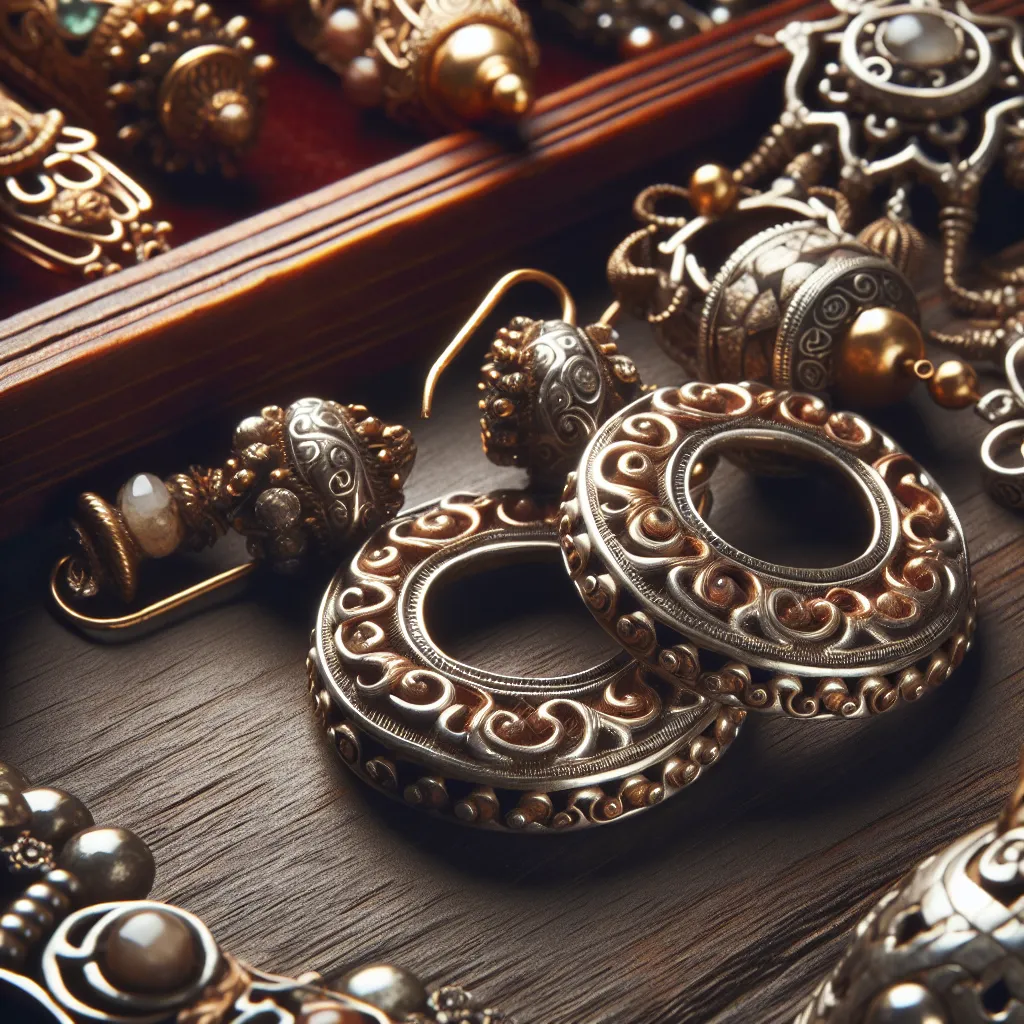The Origins of Earrings: A Historical Exploration
Earrings have held a significant role in human history, dating back to ancient civilizations. The origins of earrings can be traced back to over 5,000 years ago, with evidence of earrings found in ancient burial sites across the world, including in Mesopotamia, Egypt, and Asia. These early earrings were crafted from various materials such as metal, wood, and precious stones, showcasing the diverse cultural and artistic influences of their time.
Ancient cultures often viewed earrings as more than just decorative accessories, imbuing them with symbolic significance. For instance, in ancient Egypt, earrings were not only worn as adornments but also symbolized wealth, status, and spirituality. Similarly, in some African and Native American cultures, earrings were believed to provide protection and ward off evil spirits.
Furthermore, earrings have been worn by both men and women throughout history, with different styles and designs evolving to reflect the social norms and fashion trends of each era. From the intricate gold earrings of the ancient Greeks to the elaborate jade earrings of the Chinese dynasties, each culture has contributed to the rich tapestry of earring history.
Understanding the historical origins of earrings provides a fascinating glimpse into the cultural, artistic, and symbolic significance of these timeless accessories.
Cultural Significance of Earrings Around the World
Earrings have held a significant cultural symbolism around the world for centuries. In many cultures, earrings are not merely fashion accessories, but carry deep cultural and symbolic meanings. In ancient Egypt, earrings were a symbol of wealth and social status, often adorned with precious gemstones and intricate designs. Similarly, in ancient Rome, earrings were worn to signify social ranking and were also believed to protect the wearer from harm.
Throughout history, earrings have also been used as symbols of religious and spiritual significance. In Hindu culture, earrings, known as “karnavedha,” are worn by both males and females as a symbol of cultural identity and a mark of respect for the tradition. Additionally, in many Native American tribes, earrings were worn as symbols of spirituality and were believed to provide protection and guidance.
Furthermore, earrings have been used to denote rites of passage and marital status in various cultures. In many African societies, specific types of earrings were worn to indicate a person’s age, social status, or tribal affiliation. In some communities, earrings were also worn as part of traditional wedding attire, symbolizing the union of individuals and families.
Today, the cultural significance of earrings continues to be celebrated and preserved. Many people choose to wear earrings that honor their cultural heritage or personal beliefs, recognizing the timeless symbolism and beauty that these accessories carry.
Earrings as Symbols of Status and Identity
Earrings have been worn by different cultures throughout history to signify status, wealth, and identity. In many ancient civilizations, such as Egypt and Mesopotamia, earrings were reserved for the elites and were considered a symbol of power and social standing. The size, materials, and designs of the earrings often indicated the wearer’s rank and affiliation.
In addition to status, earrings have also been used as symbols of identity and belonging. In certain indigenous cultures, specific types of earrings are worn to represent tribal affiliations, marital status, or spiritual beliefs. The intricate details and motifs found in traditional indigenous earrings often hold significant cultural and historical meanings, acting as a visual language that communicates the wearer’s heritage and personal story.
Furthermore, throughout history, earrings have been used as a form of self-expression, allowing individuals to showcase their individuality and personal style. From elaborate gold earrings worn by royalty to simple yet elegant designs favored by commoners, earrings have served as a distinct marker of identity and social positioning.
Today, earrings continue to hold significance as symbols of status and identity. Whether adorned with precious gemstones or crafted in traditional artisanal styles, earrings remain a powerful means of conveying one’s cultural heritage, social standing, and personal identity.
Evolution of Earring Styles Through the Ages
The history of earrings is a fascinating journey through time, reflecting the evolution of culture and fashion. Earrings have been worn by various civilizations for millennia, serving as symbols of status, spirituality, and style. The evolution of earring styles through the ages provides a glimpse into the changing tastes and values of different societies.
Ancient civilizations such as the Egyptians, Greeks, and Romans adorned themselves with intricate earrings crafted from precious metals and gemstones. These earrings often had symbolic representations, such as the use of serpent motifs in ancient Egypt to symbolize royalty and divine protection. In ancient Greece, earrings were associated with femininity and adorned with symbols of fertility and prosperity.
During the Middle Ages, earrings fell out of favor in Europe due to the influence of the Christian church, which viewed excessive adornment as vain and sinful. However, in other parts of the world, such as in Asia and the Middle East, earrings continued to hold cultural and religious significance, with intricate designs reflecting local traditions and beliefs.
The Renaissance period saw a revival of earrings in Europe, with elaborate designs incorporating pearls, enamel, and intricate metalwork. Earrings became a symbol of wealth and sophistication, often worn by the nobility and bourgeoisie to display their social status and refined tastes.
In the 20th century, the evolution of earring styles accelerated with the rise of mass production and changing societal norms. From the bold, geometric Art Deco earrings of the 1920s to the big, colorful statement earrings of the 1980s, each era brought its own distinctive earring styles that reflected the cultural zeitgeist.
Today, earrings come in a myriad of styles, from minimalist studs to extravagant chandeliers, catering to diverse tastes and fashion trends. The evolution of earring styles through the ages showcases the enduring appeal of this timeless accessory that continues to be a powerful form of self-expression and adornment.
In conclusion, the evolution of earring styles through the ages reflects the dynamic interplay between culture, fashion, and tradition. From ancient symbols of power to modern expressions of personal style, earrings have transcended time to remain a beloved and cherished accessory.
Keywords: history of earrings, symbolism of earrings, evolution of earring styles, ancient civilizations, earring symbolism



